
Universidade Fernando Pessoa
Porto, Portugal

II- Tectonic Regimes & Volume Problems
Normal faults are likely to develop towards the rear of any block, which is sliding, or about to undergo sliding, down a slope under its own body-weight. Such faults, often termed growth faults, are particularly important in the proximal sediments of major deltas. A common feature of these structures is that the upper portions of the normal faults may exhibit a dip of 45° and at depth the faults may be inclined at an even lower angle, i.e. the structures are listric (from the Greek listron, spoon shape). Associated with major listric normal faults, which exhibit a downthrown in the same general direction as the glide block, sets of minor normal faults that exhibit the complementary, or antithetic, movement sense are frequently developed in order to solve potential void and volume problems.
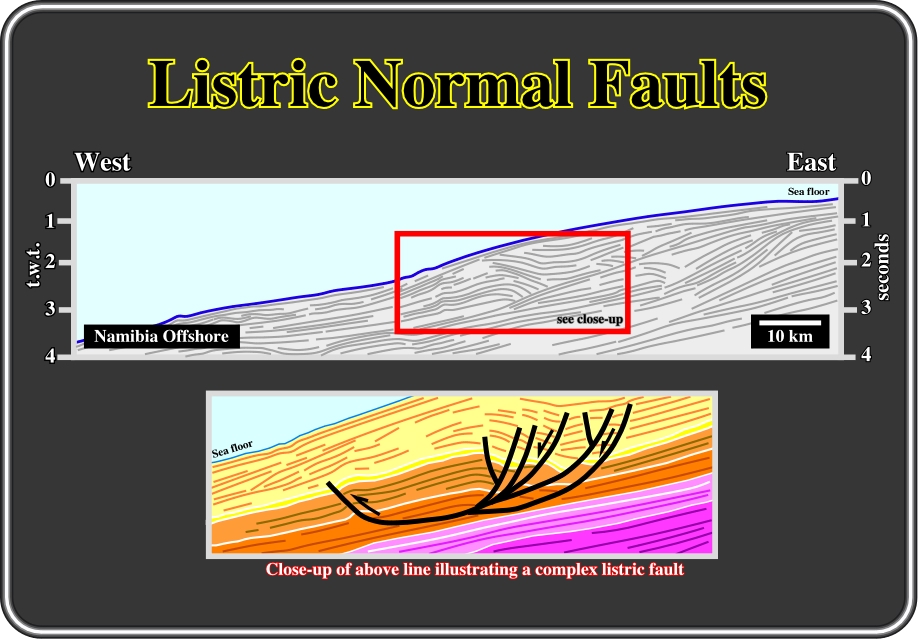
Fig. 111- Listric faults are often created in slope environments where (i) under-compaction, (ii) confining pressure decreasing seaward and (iii) high fluid pressure decaying upward are common. Landward, the seaward faults lengthen the sediments and antithetic faults accommodate volume problems, filling the potential void. Seaward, the gliding block creates a local compressional tectonic regime and so, a reverse movement of the main fault shortens the sediments.
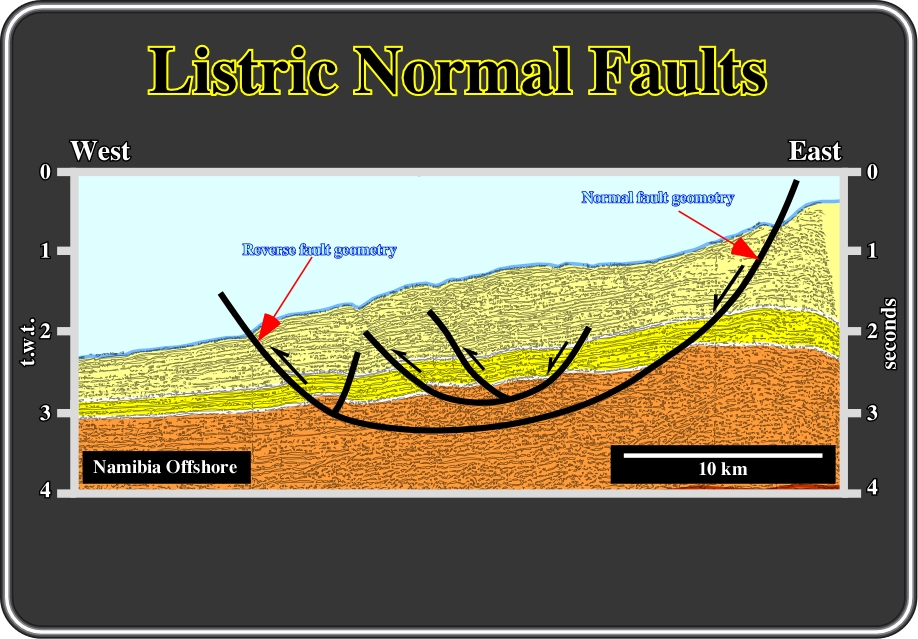
Fig. 112- The normal / reverse geometry of listric normal faults is clearly illustrated on this line from offshore Namibia. The yellow interval is slightly thickening up-dip, where accommodation was higher. The local compressional tectonic regime, developed downdip, seems to be a consequence of the updip extension as depicted in the sketch in fig. 113.
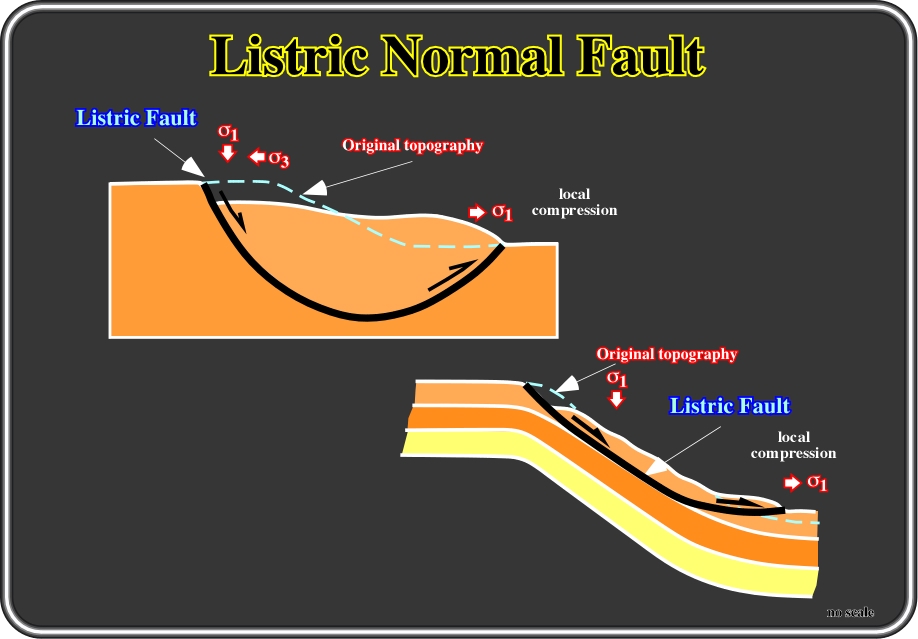
Fig. 113- Listric normal faults are favoured by reduction of frictional resistance. High fluid pressure beneath the glide block, as illustrated in fig. 114, reduces the geostatic pressure, which can induce a down-dip gliding whenever the confining pressure decreases (reduction frictional resistance).
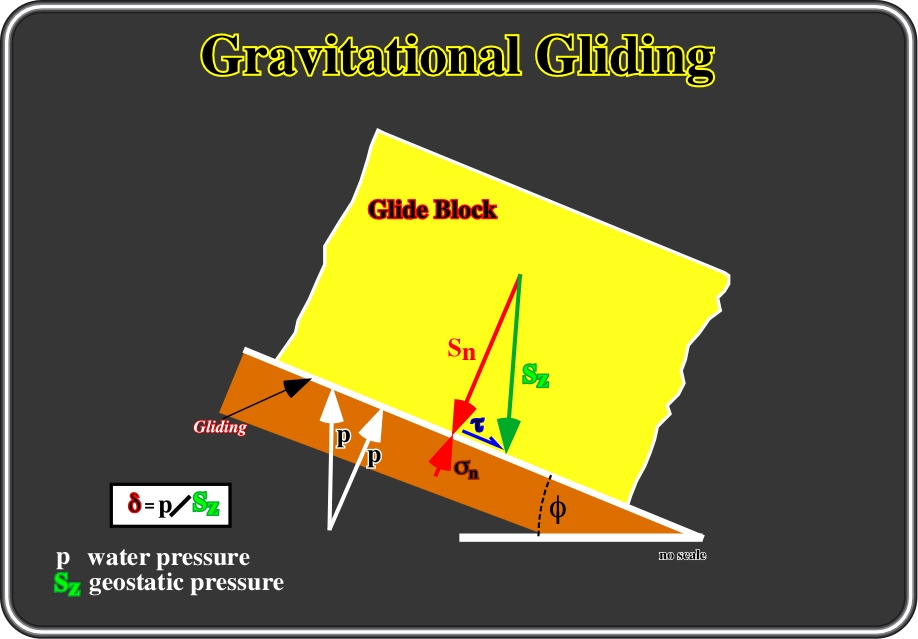
Fig. 114- Listric normal faults are favoured by reduction of frictional resistance. High fluid pressure beneath the glide block, as illustrated in fig. 114, reduces the geostatic pressure, which can induced a down-dip gliding whenever the confining pressure decreases (reduction frictional resistance).
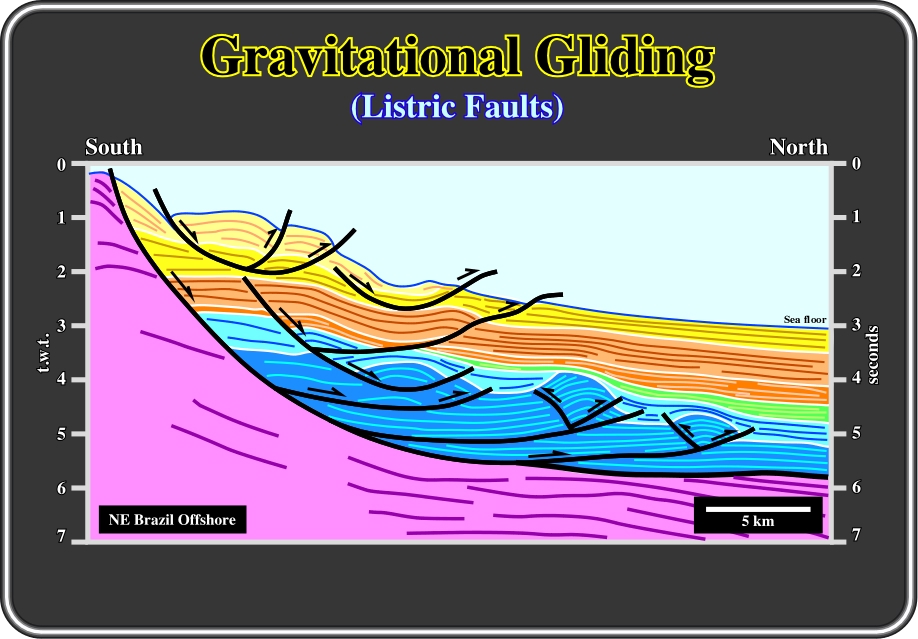
Fig. 115- In the Barreirinhas basin, seaward of the shelf break, normal listric faults are well developed until a sedimentary loading equivalent to 3 seconds (t.w.t.) of sediment thickness was deposited. Below it, the confining pressure is too high to allow sedimentary gliding, i.e. frictional resistance is too high. The geometry of the faults is typically listric. They are curvilinear and concave-upward. Landward, their geometry is typical normal. Seaward of their sub-horizontal dip, they exhibit a typical reversal geometry. Both geometries are related with potential void and volume problems as illustrated previously.
c.4- Normal Faults & Volume Problems
On the following examples of normal faults it is assumed that there is not horizontal displacement along the fault plane, in other words they are real normal faults.
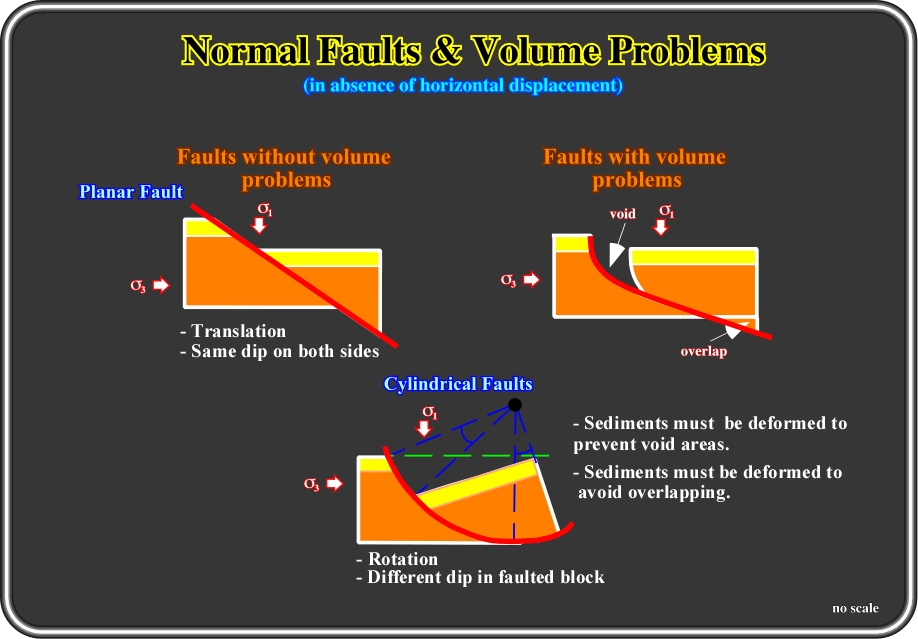
Fig. 116- Depending on the geometry of the main fault plane, normal faults can create volume problems (potential voids). In other words, there are no major volume problems when the dip of fault blocks is the same (translation) or when the fault plane is a cylindrical surface, as illustrated below.
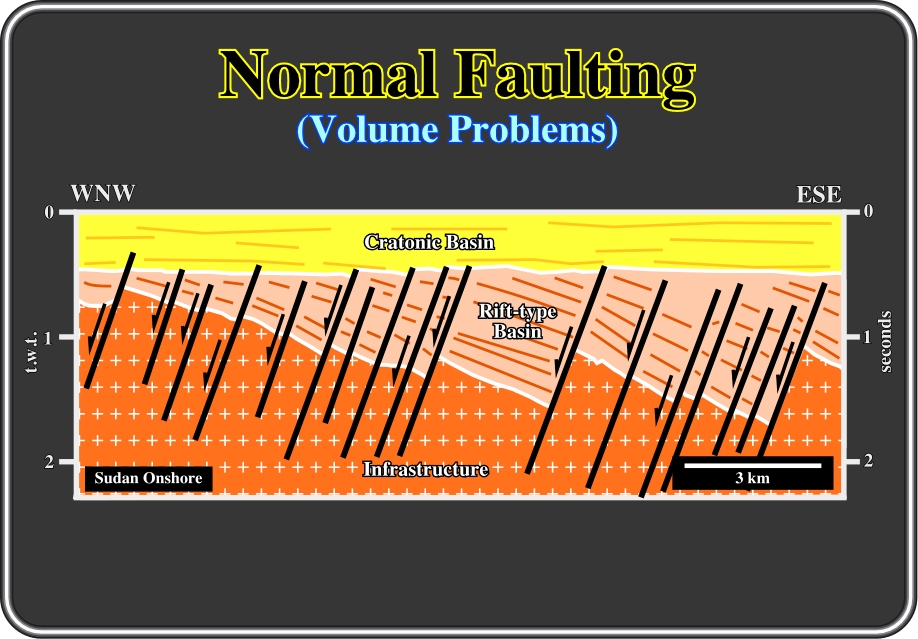
Fig. 117- The normal faulting illustrated in this interpretation does not create volume problems. Indeed, until 2 seconds (t.w.t.) depth, the normal faults are more or less rectilinear and the dip of both faulted blocks (downthrown and upthrown) is similar. However, theoretically, rectilinear fault planes (normal and reverse faults) are a physical impossibility, since the velocity of sediments increases with depth (compaction). As illustrated above, the fault planes can be considered as rectilinear at least until 2 seconds (t.w.t.). They probably flatten deeper. Notice that generally seismic markers do not emphasize fault planes. Fault planes correspond mainly to discontinuities of chronostratigraphic lines. However, there are exceptions: (i) fault planes filled by salt, (ii) fault planes filled by volcanic rocks, (iii) fault planes between sediments and high velocity intervals (infrastructures or basement).

Fig. 118- Again, here we can say that theoretical, vertical normal faults are a physical impossibility. Normal faults are developed to lengthened sediments while reverse faults are created to shortened sediments. Vertical normal faults, over more than 3-4 seconds (t.w.t.) depth, do not lengthen or shorten sediments. In addition, a vertical displacement implies a void in depth, which is also a geologic impossibility. Only true strike slip faults have significant vertical planes. As illustrated here and previously, in vertically exaggerated scales the structural behaviour of the fault planes is deformed. Only at natural scale, i.e. at scale 1:1, one can get the real dip of the fault planes. The picked fault planes do not pose major volume problems, since the dip on both fault blocks is similar and the geometry of the fault planes is roughly sub-vertical.
Send E-mail to ccramez@compuserve.com or cramez@ufp.pt with questions or comments about this short-course.
Copyright © 2000 CCramez
Last modification:August, 2006